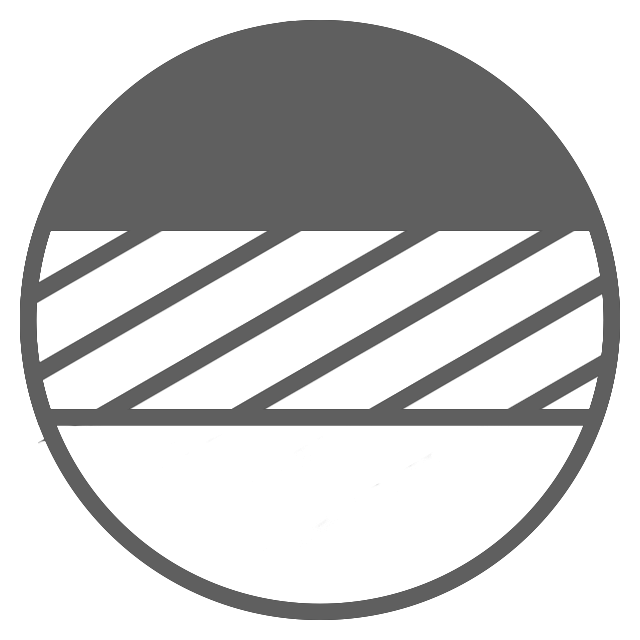Printed cushions turn a sofa into a statement, a bed into a sanctuary, and a quiet reading chair into a personal corner brimming with character. They carry colour and pattern where it matters, at eye level and within reach, softening hard edges while adding structure to a scheme. They are small items with serious impact.
The best part is how flexible they are. Swap a cover and the room shifts mood without repainting a wall or moving heavy furniture. Bright florals can bring spring cheer in February. Earthy geometrics make autumn evenings feel warmer. One square metre of fabric, cut and stitched well, can lift the entire space.
Why printed cushions earn their place in design
- They introduce colour without commitment. Try a brave palette on a 45 cm cushion before committing it to curtains.
- They layer texture. A slubby linen base with a crisp pigment print feels entirely different from a velvety pile with a deep reactive dye.
- They bridge styles. A graphic print can link a modern lamp with a vintage rug so the room reads as one.
- They carry art into daily life. Illustration, photography, brushwork and pattern become tactile objects that invite touch.
Scale matters. Large patterns on big squares feel calm and confident; small repeats can look busy if they dominate. Balance is easy to achieve when you mix across sizes and shapes.
Design decisions that make prints sing
Start with your palette. Pick two hero colours, a grounding neutral, and one accent that is used sparingly. Let one tone repeat through items around the room, so the eye travels comfortably.
Think about scale and rhythm. Combine:
- one large-scale print that sets the tone
- one medium repeat that supports the lead
- a small motif or stripe that ties colours together
- a plain or textured solid to give the eye a rest
Consider direction. A horizontal brushstroke can widen a sofa visually; a vertical motif on a lumbar cushion lifts the line of an armchair. Motifs with movement, like hand-drawn waves or palm fronds, soften straight-lined furniture.
Seasonal rotation keeps things fresh. Sun-bleached hues and airy cotton blends for spring and summer, richer tones and tactile velvets for chillier months. Store off-season covers flat, out of direct light, with silica gel in the box to avoid damp.
Fabric choices that shape the result
Fabric base sets the mood before ink ever touches it. The weave, fibre, and weight determine how ink sits, how the cushion drapes, and how it wears.
- Cotton: breathable, familiar, easy to care for. Twill and half panama weaves give a sturdy feel, plain weave feels crisper. Colours read honest and clean.
- Linen: elegant with natural slubs. Takes reactive dye beautifully with a soft, matte depth. Slight creasing adds character rather than looking untidy.
- Velvet: polyester or cotton pile brings drama to colour. Prints look lush, with a hint of shadow where the pile direction shifts.
- Faux suede and microfibre: silky hand, great for sublimation. Photographic prints appear sharp and saturated.
- Outdoor acrylic or solution-dyed polyester: purpose-made for sun and rain. Look for high lightfastness ratings and mould resistance.
Weight matters. A cover around 220 to 300 gsm holds its shape while remaining comfortable. Anything lighter suits decorative cushions that are not used daily; heavier fabrics deliver a more tailored look.
For high-traffic seating, check Martindale abrasion ratings. A figure above 30,000 cycles is reassuring for family sofas and hospitality. It keeps your print looking crisp through years of lounging.
Construction details that separate good from great
The way a cushion is made is as important as the fabric and print.
- Closures: a hidden zip allows easy cleaning. Choose strong nylon zips and bar tacks at each end to stop stress tears.
- Seams: overlocked internal seams prevent fraying. A 1.5 cm seam allowance gives strength without bulk.
- Edges:
- Knife edge for a clean silhouette
- Piping for a defined outline and a chance to pick out a colour
- Oxford edge for a tailored, formal feel
- Pattern matching: line up stripes, checks and obvious motifs across seams. Small care here signals quality.
Inserts change the comfort story. Feather and down feel luxurious and shapeable. Microfibre is hypoallergenic and bouncy. Recycled polyester keeps shape with strong support and a lower footprint. Aim for an insert 5 cm larger than the cover width for a full look.
Colour management for faithful prints
Your screen glows; fabric does not. Planning bridges that gap.
- Work at 300 dpi at print size to keep detail crisp.
- Stay in a wide-gamut profile during design, then convert to the printer’s ICC profile near output. If a profile is not available, sRGB is a safe working space for many digital printers.
- Beware pure, electric blues and neons. Adjust hues toward printable ranges without losing impact.
- Build repeats carefully. Use straight or half-drop repeats. Include a small bleed at edges so a millimetre shift does not reveal a hairline.
- Proof before committing. An A3 strike-off or a single test cover can save an entire run.
Keep a record of approved print settings and fabric batches. Consistency across reorders becomes far easier.

Care and longevity
Good printed cushions can look fresh for years with sensible care.
- Check care labels. Reactive prints on cotton or linen usually handle a gentle 30 degree wash. Sublimated polyester often tolerates more frequent cleaning and faster drying.
- Zip off covers. Wash inside out with mild detergent. Skip optical brighteners if you want colours to stay true.
- Dry flat away from direct sun. High heat can shrink natural fibres and soften adhesive interlinings.
- Spot clean velvet and pile fabrics with a barely damp cloth, then brush the pile in one direction.
- Rotate cushions the way you would a mattress. It evens out wear and fading.
Look for inks and fabrics tested to Oeko-Tex Standard 100 or similar certifications. They indicate low levels of harmful substances and are widely trusted in the UK and EU.
Styling strategies for different rooms
Living room
- Use odd numbers for visual balance. A 2-1-2 arrangement across a three-seat sofa feels grounded.
- Mix heights and shapes. Two 50 cm squares with a 30 x 50 cm lumbar in the centre create a pleasing skyline.
- Repeat one colour from a rug or artwork across two or three cushions to tie the scheme together.
Bedroom
- Layer against pillows. Two large 60 cm squares for impact, two 50 cm for comfort, plus a long bolster for a boutique look.
- Choose calming tones near where you sleep. Prints with soft edges, painted textures and natural fibres encourage rest.
Home office
- A single bold print on a supportive insert brings energy without clutter.
- Pick fabrics that do not rustle on video calls. Faux suede is quiet and smart.
Outdoors
- Sublimated or solution-dyed fabrics handle sun and showers. Quick-dry inserts make life easier.
- Secure ties or non-slip backs keep cushions in place on windy days.
Nursery or kid’s room
- Opt for washable covers and microfibre inserts.
- Use prints that grow with the child. Abstract shapes in confident colours outlast novelty characters.
Trends to watch without chasing fads
- Painterly colour fields that feel like art studio canvases.
- Botanicals with oversized leaves and unexpected colour pairings.
- Heritage stripes reworked with irregular edges or hand-drawn lines.
- Black and cream geometrics for a graphic but warm look.
- Dopamine decor palettes, used smartly as accents rather than full saturation.
Trends are most successful when filtered through your own taste. Pick one element that feels current and mix it with pieces you already love.
Responsible choices that still look beautiful
Sustainability does not mean dull design. It rewards careful sourcing and craft.
- Recycled polyester inserts with high fill power reduce virgin fibre use.
- Water-based inks and closed-loop systems cut down on wastewater.
- Local or regional production shortens transport and supports skilled jobs.
- Quality zips and sturdy stitching keep covers in use longer, which is the greenest outcome of all.
- Choose timeless prints over throwaway gimmicks. The most sustainable cushion is the one you still want on your sofa a decade from now.
Packaging can match your values. Recyclable polybags or paper sleeves, minimal swing tags, and savvy logistics make a difference at scale.

Buying with confidence: quality checks that matter
When you have samples in hand, inspect with care.
- Colour: look for even coverage, no banding, and clean edges on motifs.
- Registration: stripes and checks should meet at seams without drift.
- Stitching: tight, even stitches with secure back-tacking at zip ends.
- Zip: runs smoothly, colour-matched, no warping along the seam.
- Insert: full corners, no clumps, weight appropriate to size.
- Smell: a neutral scent suggests proper curing and clean storage.
Price reflects method, fabric and craft. A responsibly made, printed cover in a good cloth will cost more than a mass-market piece and should outlast it gracefully.
Scaling up for small brands and studios
Turning a few beloved designs into a steady line takes planning.
- Work with a mill or printer who shares your standards. Request print tests on the exact base cloth you intend to use.
- Establish a critical path: design, sampling, approvals, production, transit, photography, launch.
- Build in buffer time for fabric backorders and machine maintenance. Few things are truly instant in textiles.
- Create a spec sheet for each design. Include fabric, print method, size, seam allowances, zip length and position, label placement, and QA checkpoints.
- Standardise sizes to streamline inserts and packaging.
Be consistent with colour naming and batch codes. Customers notice when the “Marine” blue from last season no longer matches.
Common mistakes and how to avoid them
- Overcrowding patterns. Give your boldest print space to breathe by pairing it with textured plains.
- Ignoring fabric base. The same art behaves differently on linen than on polyester. Always test.
- Undersizing inserts. Flat corners make a cushion feel tired. Size up the insert for a plump look.
- Neglecting light. Sun through a bay window can fade colours over time. Rotate placements or choose higher lightfastness.
- Skipping wash tests. A quick home wash can reveal shrinkage or dye migration that studio tests missed.
A simple plan for creating your own printed cushion
- Define the purpose. Statement piece for the sofa, calming accent for the bed, hardwearing outdoor option.
- Choose the fabric base to match the purpose.
- Finalise artwork at print size, 300 dpi, with a suitable colour profile.
- Select the print method that suits fibre, volume and detail.
- Order a sample strike-off. Evaluate under daylight and warm artificial light.
- Approve, then produce with clear specs for cutting, stitching and finishing.
- Pair with a quality insert, sized up for fullness.
- Style, photograph, and enjoy. Rotate with the seasons to keep the space lively.
Printed cushions are proof that design can be both artful and practical. They bring personality within reach, invite comfort, and reward attention to detail. Whether you pick a single showstopper or a thoughtful mix, the right prints make daily life feel more uplifting. And that is the point of good design.





